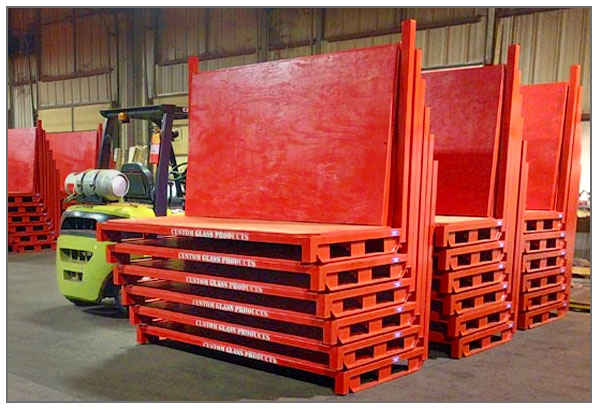A large glass manufacturer approached us after they had a serious accident killing two employees and injuring several others when a robotic material handling unit was moving float glass from one part of the plant to another using a transport rack. The glass panels weighing several thousand pounds were being lifted when suddenly the rack fell apart causing the glass to fall on to the two people that were standing next to the transporter and were crushed and killed by the glass.
After an extensive investigation into the accident, the cause was determined to be the type of welding used on the glass transport rack. After reviewing all the data associated with the accident including the weight of the glass as well as the glass rack it was determined that the rack had broken at the weld seams and thus caused catastrophic failure of the rack resulting in the accident. Further investigation showed that the rack was manufactured using a stich welded process rather than a seam welded process.
The glass manufacturer audited all of the racks they were using which were purchased from four different vendors. Three of the vendors had used a stitch welding process to fabricate the racks in order to reduce costs and only one vendor, NSMC, was using a complete seam welding process on all of the racks they sold. The manufacturer then awarded NSMC the exclusive contract for supplying transport racks and continues to do so.
In stitch welding, you weld short parts of a seam, then either skip a distance, or move to another part of the seam and do a short weld. Then repeat until the entire seam is welded. This concept is that it distributes the heat of welding thus reducing warping, In seam welding you start at one end and proceed to the other end in a continuous weld with no breaks in the joint.
Stitch welding is often done on thin sheet metal like automotive panels and thinner sheet metal which is sufficient but thicker steel used in plates or tube frames requires a more secure solid weld in order to maintain the integrity of the weld properly and safely. Both methods have different strengths requirements depending on the purpose of use and the joint requirements according to design of the product or the construction.
Stitch welding has a major disadvantage, as far as strength of the joint is concerned, which is due to unwelded parts, resulting in the reduction of the overall weld length which in effect reduces the strength of the weld joint. Seam welding is a uniform continuous weld along the joint without any unwelded parts and provides an extremely durable weld because the joint is forged due to the heat and pressure applied. A properly welded joint formed by resistance welding can easily be stronger than the material from which it is formed.
NSMC used complete seam welds on their racks because of the experience in the glass manufacturing industry and determined that all of their racks require a complete seam weld whereas the other rack fabricators believed that the stitch welding was good enough because it worked well in their other projects and lacked the industry knowledge to provide a product that could handle the weight and movement used in the glass industry. Two, lessons the glass manufacturer learned from this situation were, One the importance of choosing a vendor with sufficient experience in their industry and their applications to consider the design and manufacturing of the racks so that the racks will perform without failure and to protect their employees. Two, not to make a purchasing decision based on the lowest cost without further understanding of why the unit is less expensive.
Welding Types - Stitch Welding & Seam Welding

